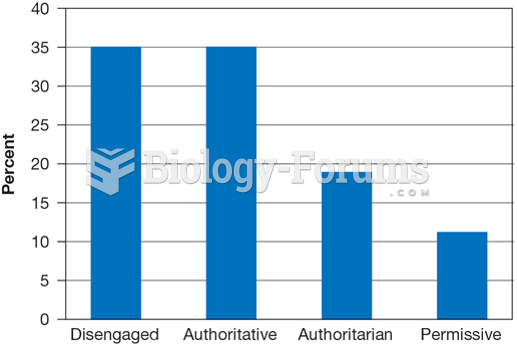|
|
|
There can actually be a 25-hour time difference between certain locations in the world. The International Date Line passes between the islands of Samoa and American Samoa. It is not a straight line, but "zig-zags" around various island chains. Therefore, Samoa and nearby islands have one date, while American Samoa and nearby islands are one day behind. Daylight saving time is used in some islands, but not in others—further shifting the hours out of sync with natural time.
Earwax has antimicrobial properties that reduce the viability of bacteria and fungus in the human ear.
More than 2,500 barbiturates have been synthesized. At the height of their popularity, about 50 were marketed for human use.
On average, the stomach produces 2 L of hydrochloric acid per day.
Excessive alcohol use costs the country approximately $235 billion every year.
 Each of the eight injectors shown are producing a correct spray pattern for the applications. While ...
Each of the eight injectors shown are producing a correct spray pattern for the applications. While ...
 Typical Mendelian pattern of inheritance of HLA haplotypes includes children AC, BC, AD, and BD. ...
Typical Mendelian pattern of inheritance of HLA haplotypes includes children AC, BC, AD, and BD. ...





